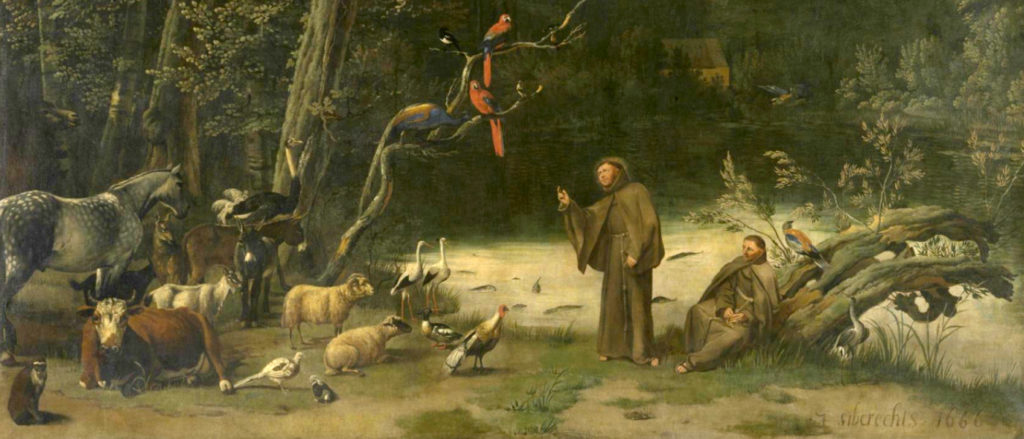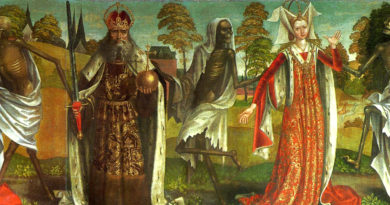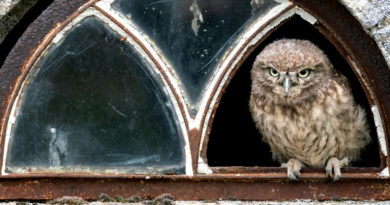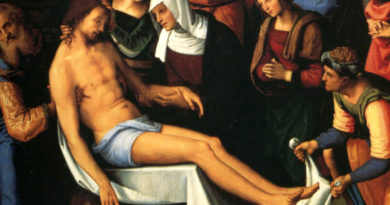St. Francis of Assisi: Patron Saint of Pets & Animals

Photo courtesy of Wikimedia Commons.
The Catholic Church venerates more than 10,000 people as saints — many of them associated with unusual things. For example, St. Bibiana is the patron saint of hangovers, St. Columbanus of motorcyclists, and St. Balthasar of playing-card manufacturers.
Below, you will discover why St. Francis of Assisi is considered the patron saint of pets and animals.
The Life of St. Francis of Assisi
Born in 1181 to a wealthy family in Assisi, Italy, this future Catholic saint was originally named Giovanni, the Italian equivalent of “John,” but his father took to calling him Francesco, which means “Frenchman” in Italian. (His father was a prosperous silk merchant who loved France and was married to a French noblewoman.)
Growing up, Francis (the short version of Francesco) enjoyed a life of luxury and privilege, but he and his family were not members of the nobility. Thus, the ambitious youth dreamed of distinguishing himself during military battle so he might receive the elevation in class he desperately desired.
In his early twenties, Francesco received two such opportunities. First, his hometown of Assisi went to war against another Italian city, during which Francis was captured and imprisoned in a dungeon. Deprived of luxury and privilege for about a year, he quickly resumed his former life of excess and indulgence as the son of a wealthy family after his release.
Roughly a year later, in 1204, while traveling to a second military battlefront, Francis experienced a spiritual vision that fundamentally changed him and altered his life. Not only did this revelation show him the futility of his current lifestyle and ambitions, but it also instructed him to return home immediately.
Obeying the vision, Francis ultimately renounced all his worldly goods in order to devote his life to God, the Christian Church, and the lessons of the Gospels in the Bible so he could follow the example of Jesus as closely as possible.
After spending the rest of his life in poverty while spreading the Christian doctrine, Francis eventually grew ill and died in 1226 at the age of 45.
St. Francis’ Connection to Pets and Animals
Francis viewed nature and all its marvelous creations as a reflection of God’s power and purpose and, therefore, everything on earth — animal or plant, large or small — shared a kinship and bond that required treating everything else in God’s creation with respect and as an equal.
This viewpoint also extended to animals, and two legends helped solidify Francis as the eventual patron saint of pets/animals. The first recounts how he stopped a man-eating wolf from terrorizing residents of a town near Assisi by preaching to it using the power of his voice.
The second legend relates how Francis paused during his travels to preach to hundreds of birds perched in trees along the road, assuring them that God cared for them and urging them to thank Him for their beautiful “clothes.”
For these reasons, among others, St. Francis of Assisi became the Catholic patron saint of pets and animals. Today, pet owners often pray to this Catholic saint to bless their pets, and countless pet cemeteries contain a statue, mural or some other image of St. Francis on their grounds.
Sources:
“St. Francis of Assisi.” www.catholic.org. Retrieved January 5, 2019. http://www.catholic.org/saints/saint.php?saint_id=50







